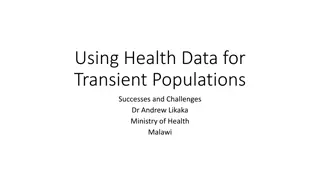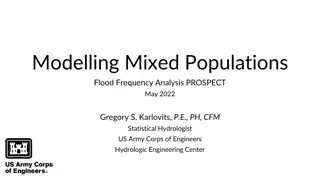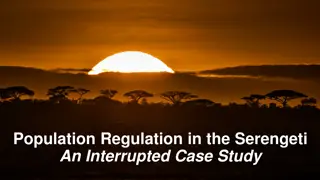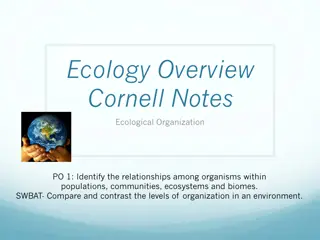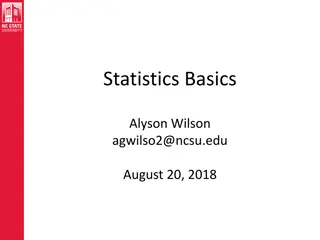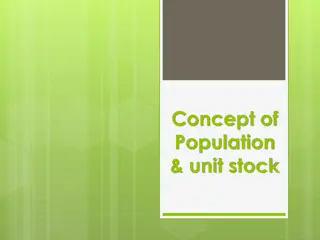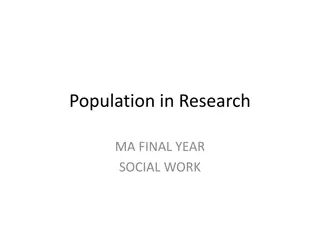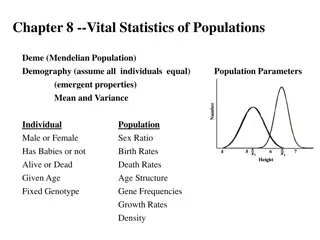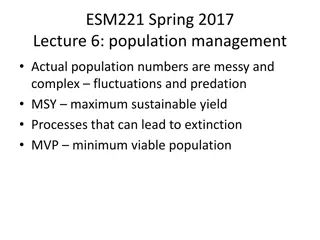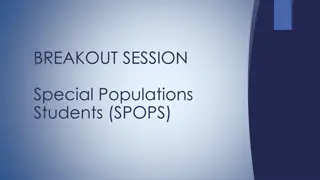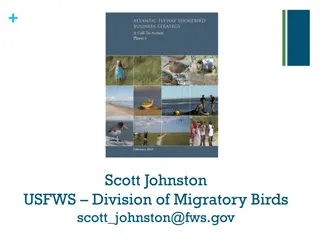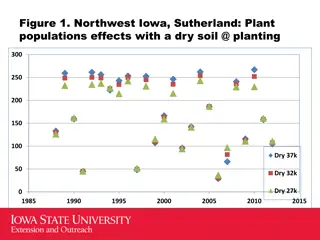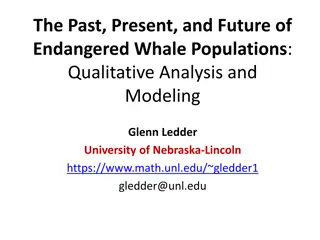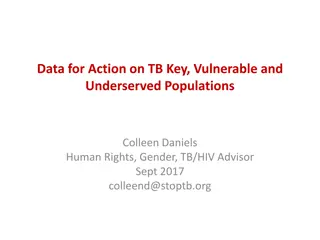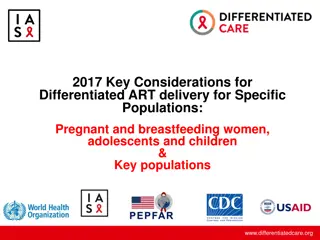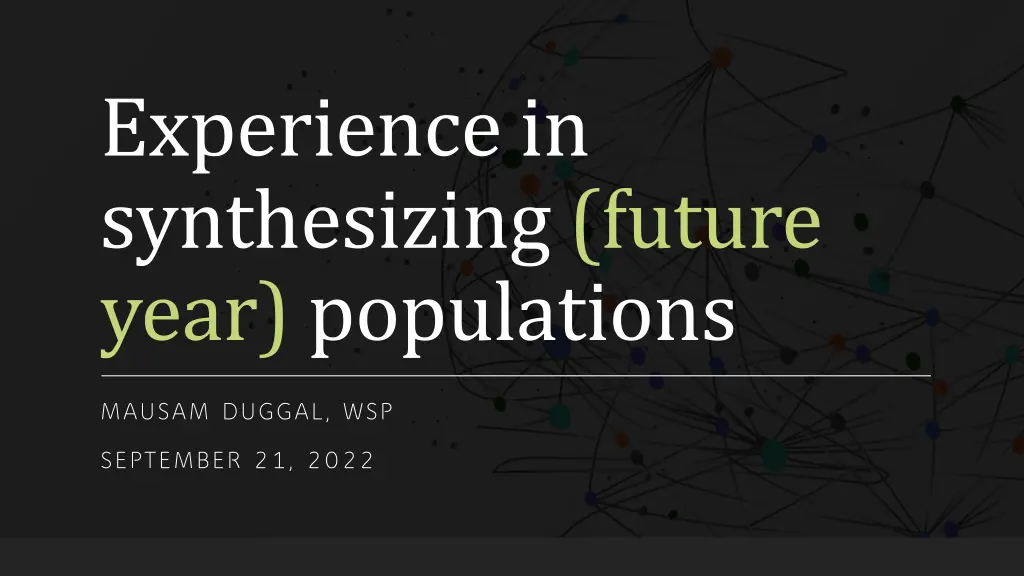
Synthesizing Future Year Populations Analysis
Explore the experience in synthesizing future year populations by Mausam Duggal. Discover the good, the bad, and the ugly aspects of the process, including stable algorithms, regional planning, and potential ABM flows. Uncover challenges like limited geographic granularity and single-dimensional controls. Dive into the details of population synthesis methods and their implications for planning and modeling.
Download Presentation

Please find below an Image/Link to download the presentation.
The content on the website is provided AS IS for your information and personal use only. It may not be sold, licensed, or shared on other websites without obtaining consent from the author. If you encounter any issues during the download, it is possible that the publisher has removed the file from their server.
You are allowed to download the files provided on this website for personal or commercial use, subject to the condition that they are used lawfully. All files are the property of their respective owners.
The content on the website is provided AS IS for your information and personal use only. It may not be sold, licensed, or shared on other websites without obtaining consent from the author.
E N D
Presentation Transcript
Experience in synthesizing (future year) populations MAUSAM DUGGAL, WSP SEPTEMBER 21, 2022
The good The bad The ugly, this is a stretch
Good Stable algorithms (PopSyn3, PopSim, Doppleganger ) Accuracy is easily measured Multiple geographic controls Flexible weights Wealth of information in PUMF Ability to replace some travel model components (workplace type choice models) Hierarchical files linking persons to households
Good Clustering on the 45 degree line is desirable Regional Planning District TAZ Weights 10,000,000 10,000,000 10,000 Differing geographic controls and weights households persons age gender NOCS income dwelling type X X X X 1,000 100,000 1,000 100,000 X X X
Good Potential ABM flow Decides those permanently working from home Auto ownership Picks work/school location Variables Worker status Occupation category Age group Household composition Income groups Accessibility* Relevance Revised ABM flow PUMF Data
Bad PUMF 1% sample (~130,000 records) Limited geographic granularity Missing values require imputation Future control distributions are generally static or derived from land use models that are simplified Definitional changes every five years
Bad Missing record distribution Agegrp Sex Dtype Totinc Agegrp Sex Dtype Totinc 7,425 950 1,397 44 5 7 - - does not allow varying underlying seed by area 59 7 Total PUMF records After filtering missing values Cleaned PUMF records 131,915 7,891 124,024 Two geography granularity PUMF distribution of underlying seed (population) is static
Ugly Controls are single dimensional
Thank you and questions


